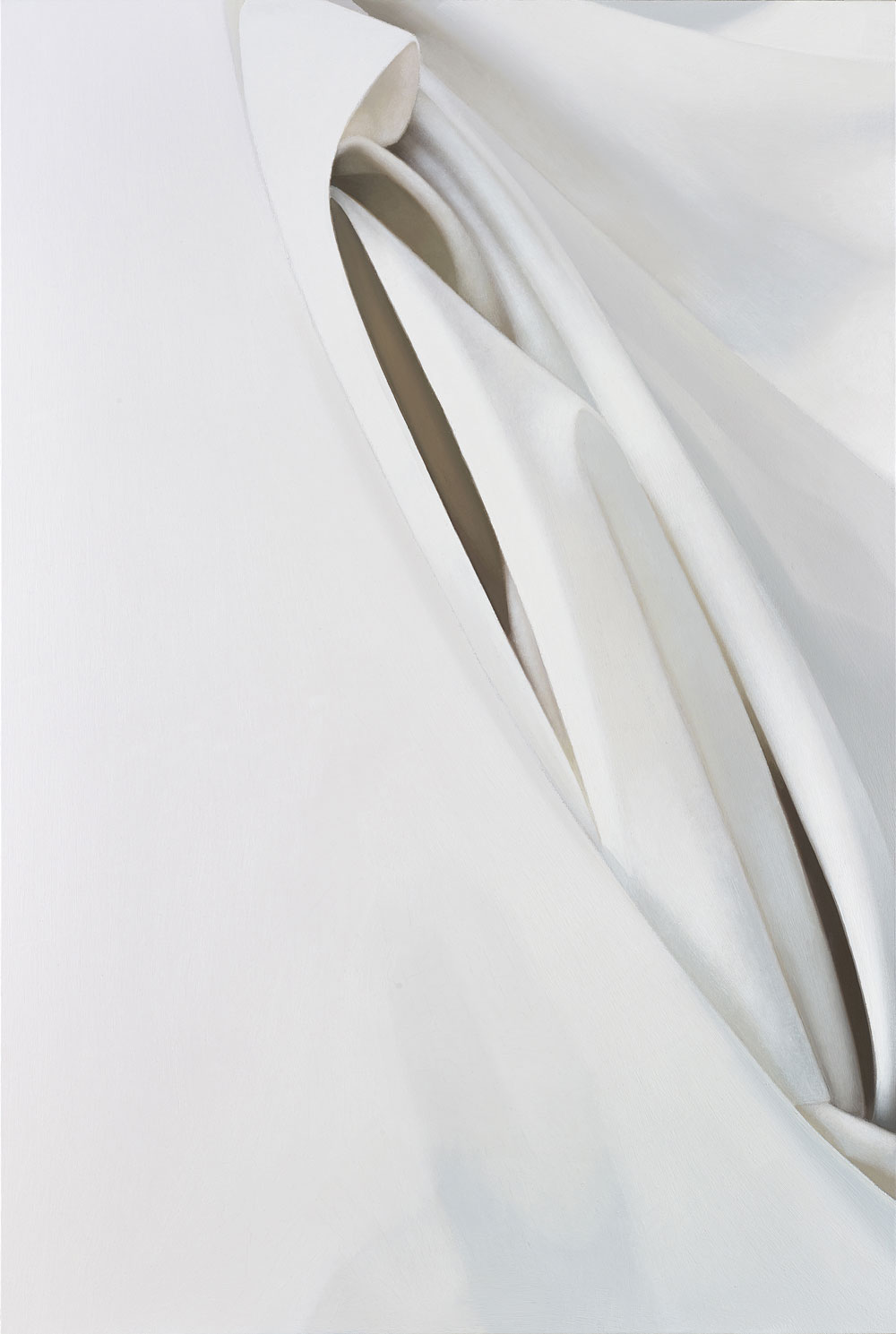Alison Watt
Parafin, London, UK
Parafin, London, UK

If the art world is a Monopoly board, Alison Watt advanced straight to Mayfair. While still a student in 1987, she won the National Gallery’s Portrait Award; by 1989, she had painted the Queen Mother. Over the past two decades, Watt has departed from the accessible, accomplished portraiture of her early works – her depiction of Elizabeth Senior showed a smiling grandmother in a spotty satin dress, teacup by her side – immersing herself in the time-honoured pursuit of capturing fabric in paint.
‘The Sun Never Knew How Wonderful It Was’ at Parafin, Watt’s first exhibition in London since a solo show at the National Gallery in 2008, focuses on 12 trompe l’oeil oil paintings of suggestively composed fabric. In taking on the fold, Watt aligns herself with a rich history of artists exploiting the sensual possibilities of textiles, from the stone drapery of classical sculpture to Giovanni Bellini’s painted shawls and Lucio Fontana’s lacerated canvases.

In the upstairs gallery, three near-identical works – Iris (2014–15), Moor (2015) and Himation (2015) – each depict a white sheet gathered in pleats around an ellipse, darkening towards an opening at the base. These are the most overtly sexual paintings on show and map the female anatomy with precision.
Elsewhere, tropes of feminine sexuality abound, in soft-focus curves, mysterious interiors and bridal whites, coupled with titles – Venus (2015), Slip (2015), Pearl (2015) – drawn from a vocabulary of jewellery, underwear, goddesses and flowers.
Himation, named after the draped garments worn by ancient Greeks, was first shown at the British Museum in 2015, but there are new fabric paintings here too, inspired by Peter Paul Rubens’s baroque masterpiece Venus Frigida (1614). In Rubens’s composition, the cold, corpulent love goddess huddles beside an exquisitely stroppy Cupid, with only a gossamer shawl between them for warmth. Watt’s large paintings Venus and Archer (2015) take from the Rubens its temperature and the indulgent undulations of flesh. Here, the fabric is plumper – less Egyptian cotton bed-sheet, more luxury towelling robe – and wintery blues chill the shadows.

No material could ever form such perfectly suggestive shapes, of course, and the hallucinatory nature of Watt’s compositions draws parallels with the paintings of Georgia O’Keeffe, whose furrowed and swollen landscapes thrum with sex. If O’Keeffe’s paintings are intensely physical, Watt’s are discarnate, untouched by the messy heat of real bodies: no blood rushes through these folds.
In the downstairs gallery are a number of smaller, fabric-free paintings, also concerned with symbolic openings and modulations of light. A blank sheet of paper peels away from a monochrome background; a black hole sinks in the middle of a white canvas. At the far end of the room is Bolt (2015), Watt’s first portrait in over a decade. The subject is the same sulky archer from Rubens’s Venus Frigida, but cropped, flattened and painted in greyscale. This is Cupid, yes, but drained of vitality – as if passed through the great photocopier of modernity, and oddly anaemic for it.

To view Watt’s paintings en masse is to bear witness to a heritage fantasy: there may be no nymphs amongst the lily pads or ladies frolicking in the bathhouses at Pompeii but, between the goddesses and grandeur is a Victorian, neo-classical sensibility, in which allusions to antiquity serve to idealize the female sex. This is why, no doubt, I left the exhibition thinking of Victorian art critic John Ruskin’s marriage to Effie Gray, which was annulled having never been consummated. The reason? Legend has it that the critic – a student of the smooth, marmoreal women of classical art – was horrified, on his wedding night, to discover Gray’s abundance of pubic hair. Perhaps Ruskin would find solace among Watt’s reveries, in which the only hairs on show are those shed by a well-schooled brush.























